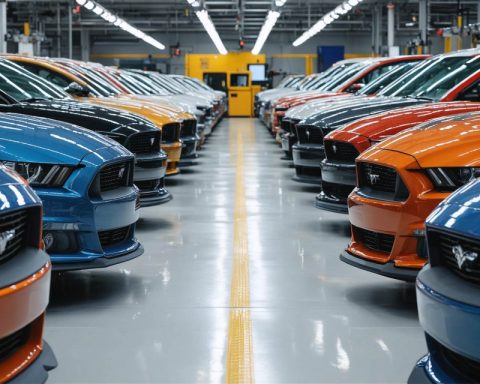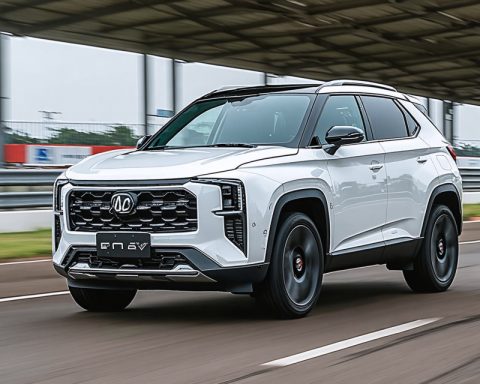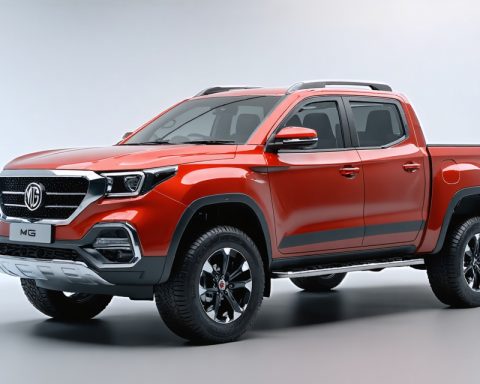- The Trump administration’s 25% tariff on foreign vehicles is creating uncertainty for Austin’s car dealerships, significantly impacting consumer budgets and dealer profits.
- The tariffs aim to support local manufacturing but result in increased vehicle prices, potentially reshaping the economic landscape for both dealers and consumers.
- Nicolette Perez from West Auto Sales highlights the daunting challenges faced by family-run dealerships, with increased costs in both imported vehicles and auto parts such as water pumps and gaskets.
- Dealerships are forced to adapt, recalibrating purchasing strategies to maintain competitiveness and affordability amidst rising costs.
- Innovative sourcing and strategic foresight become crucial for survival, as dealerships must navigate unpredictability to thrive in a changing market.
- Austin’s dealerships represent perseverance, showcasing the industry’s resilience and adaptability in the face of economic challenges.
A commercial storm brews over Austin’s car dealerships as the air thickens with anxiety and uncertainty. The Trump administration’s decision to enforce a 25% tariff on foreign vehicles has cast long shadows over the gleaming showrooms across Central Texas. The tariffs, designed to bolster local manufacturing, inadvertently tighten the noose around consumer budgets and dealer profits. With each luxurious automobile landing on Texan soil now potentially escalating in price by thousands of dollars, the ripple effects threaten to reshape the economic landscape for both dealers and drivers alike.
Nicolette Perez stands among the winding lanes of cars, a custodian of tradition and trust at West Auto Sales—a family-run establishment that has thrived for nearly three decades. Yet, even her seasoned resilience wavers beneath the looming tariff cloud. As she surveys her lot, Perez reflects on a past where pandemic-induced scarcity seemed insurmountable. Today, the horizon seems even more daunting. The newly imposed tariffs promise not merely to tweak prices or briefly stunt inventory, but to impose seismic shifts.
The backbone of her operations is the steady influx of quality used vehicles, a linchpin now slipping through her grasp in a market where auto parts themselves—water pumps, gaskets, seals—have already crept up in cost. Each impending repair or refurbishment carries a heftier price tag, a burden echoed across the industry. For dealership owners like Perez, the balance between staying competitive and maintaining affordability grows slimmer by the day.
The economic complexity unfolds like a chessboard with fewer pieces. Dealer strategies evolve rapidly; Perez and her team are becoming adept at recalibrating their purchasing choices. They dissect each potential acquisition, gauging whether it can withstand the new financial pressures without stretching customers’ budgets to breaking point. This vigilant recalibration manifests a survival reflex in an industry accustomed to turbulence but unprepared for such an unforeseen economic squall.
As the situation evolves, it becomes clear that adaptation is not a choice but a necessity. For car dealerships across Austin and the United States, the key lies in innovative sourcing and strategic foresight. If they can navigate these unpredictable waters, they might not just survive—they could thrive in a redefined market landscape where creativity and resilience become their greatest assets. In the end, the story of Austin’s dealerships is one of perseverance, an enduring testament to the industry’s ability to weather any storm.
How Austin Car Dealerships Can Weather the Tariff Storm: Strategies for Success
The Impact of Tariffs on Austin’s Car Dealerships
The Trump administration’s decision to impose a 25% tariff on foreign vehicles poses profound challenges for car dealerships in Austin. The tariffs, intended to bolster local manufacturing, have resulted in rising costs for both new and used vehicles, straining consumer budgets and dealer profitability. As a result, dealerships like West Auto Sales must innovate and adapt to remain viable in this shifting landscape.
Innovations and Strategies for Dealing with Tariffs
Dealerships must adopt new strategies to counteract the impact of tariffs. Here are some practical steps and insights to help Austin car dealerships navigate these challenges:
1. Diversify Inventory Sources: Dealers can explore sourcing vehicles and parts from domestic manufacturers or countries not impacted by the tariffs to manage costs effectively.
2. Enhance Value-Added Services: By offering additional services such as extended warranties, maintenance packages, and financing options, dealerships can provide more value to consumers and potentially increase revenue streams.
3. Strengthen Customer Relationships: Building stronger relationships with customers can foster loyalty and repeat business, critical when market conditions become challenging.
4. Optimize Operations: Implementing lean management practices and improving supply chain efficiency can help dealerships cut costs and maintain competitiveness.
5. Utilize Data Analytics: Leveraging data analytics can inform better purchasing and pricing decisions, ensuring cars are priced competitively while maintaining margin.
Real-World Use Cases and Industry Trends
The automotive industry is seeing a growing trend towards electric vehicles (EVs), driven by environmental concerns and technological advancements. Dealerships that pivot towards selling EVs and include charging stations may tap into a burgeoning market and potentially circumvent some tariffs if these cars are locally manufactured.
Another trend is the rise of online car sales platforms. By investing in digital sales strategies, dealerships can widen their customer base beyond just local buyers.
Pros and Cons Overview
Pros:
– Opportunity to innovate and diversify business operations.
– Potential to expand into new markets, such as electric vehicles and online sales.
– Building closer customer relationships through enhanced service offerings.
Cons:
– Initial costs for adapting to new strategies can be high.
– Market uncertainty might deter investment.
– Increased complexity in managing diversified inventories.
Actionable Recommendations
– Invest in Technology: Modernize your dealership with data-driven tools and platforms that aid in more efficient inventory and customer management.
– Explore Partnerships: Forge partnerships with local businesses and community organizations to boost your market presence and customer base.
– Train Staff: Equip your team with skills to adapt to new sales methods, particularly in digital and remote selling.
Conclusion: The Path Forward for Austin Dealerships
While the tariff situation presents a formidable challenge, car dealerships in Austin can leverage creativity, resilience, and strategic foresight to not only weather the storm but potentially thrive in a new market landscape. By focusing on innovation, customer service, and operational efficiency, dealers can secure their future in an ever-evolving industry.
For further guidance on adapting business strategies, visit Forbes or explore automotive insights at Autotrader. Additionally, industry news and trends can be found on Reuters.
With these strategies, Austin dealerships are better equipped to handle economic uncertainty and turn challenges into opportunities for growth.


















